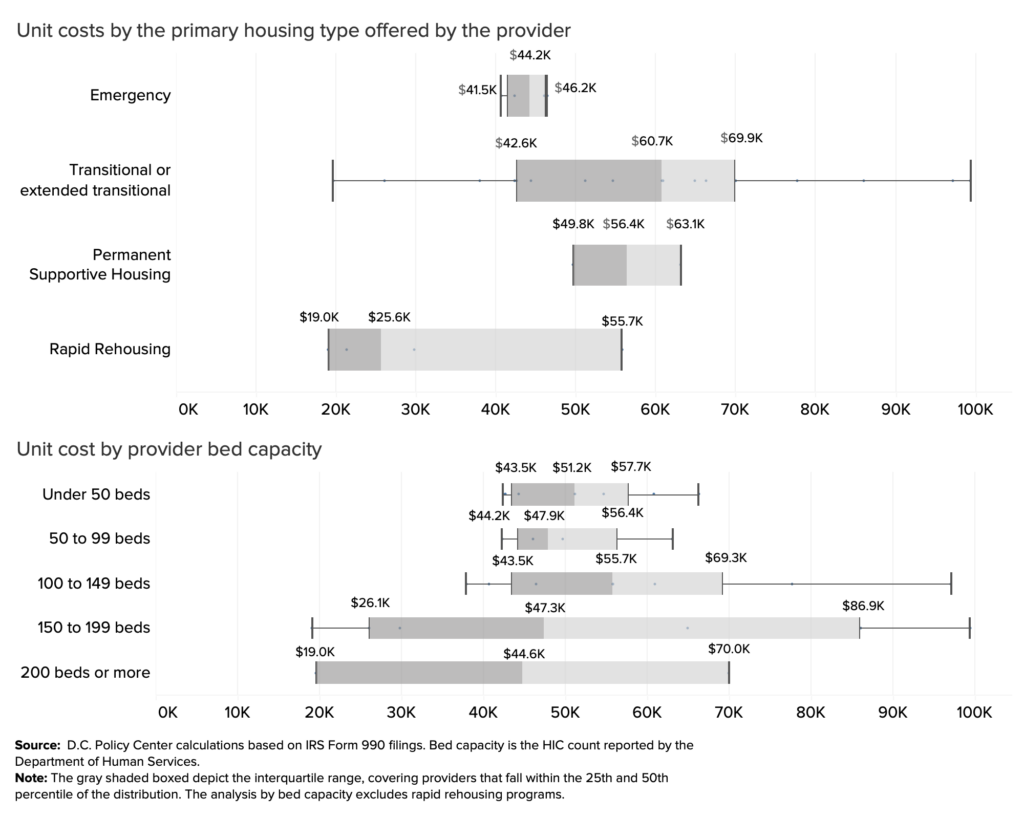

On March 31, 2023, Director of the Policy and Research Emilia Calma testified during the FY2024 budget oversight hearing on the Department of Human Services before the Committee of on Housing. The testimony focused on findings about financial structures of housing providers of youth experiencing homelessness. The testimony is based on a forthcoming D.C. Policy Center report, Public Expenditure Review: Programs servicing youth who are experiencing homelessness in the District of Columbia. You can read her testimony below, or download a PDF copy.
In April, the D.C. Policy Center will release a report on housing providers who serve youth experiencing homelessness in the District of Columbia. Our report analyses the costs of various housing programs that serve youth that are experiencing homelessness in the District of Columbia including (a) how providers spend their resources; (b) how spending changes by type of service; (c) how providers pay for these expenses, and (d) whether providers are experiencing fiscal risks and other barriers.
The systems that serve youth experiencing homelessness are relatively young. The city began investing in housing options for the youth in 2017, and since then bed capacity increased by 62 percent, from 643 beds to 1,347. Capacity is spread between 17 providers offering 48 distinct programs, 25 of which receive funding from DHS.
Importantly, the providers of housing for youth experiencing homelessness vary greatly in terms of financial structures, size of the organization and beds available, focus areas, and services offered. Estimated unit costs—the spending per bed per year—show a wide variation across providers, years, and program types, with an estimated median unit cost of $49,700, and an interquartile range of $40,700 to $63,100.1 Unit costs were lower for rapid rehousing and emergency shelters, which do not typically provide long term wraparound supports, and unit costs were highest and most varied for transitional and extended transitional housing.


Additionally, there were large variations in DHS grants per bed received across housing providers, reflecting differences in how organizations were set up in 2017, the size and scale of operations, and the level of services offered to youth including career coaching, transportation, mental health services, and more. However, there is little information on how much of these differences are driven by actual program costs, and how much are legacy differences that date back to original funding decisions.
Provider surveys revealed that the main barrier and obstacle for growth faced by housing providers for youth homelessness was funding, including the amount of funding acquired, the timeliness of the grants, and rising costs including salaries.
Going forward, the District will need a comprehensive understanding of tiers of service and funding levels, better definitions pertaining to the types of housing offered, and will need to work with providers to ease various financial barriers including the timing of grant disbursements and negotiating greater flexibility within grant funding.
Detailed information about provider revenue, differences in unit costs between different housing programs, common problems faced by providers, and more can be found in our forthcoming report.
